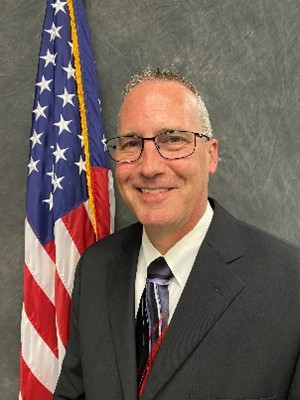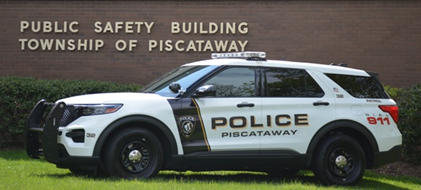- MADD Roll Call Series | MADD Law Enforcement Impaired Driving Roll Call Video Series
- MADD’s 2021 Court Monitoring Report | Effective Court Monitoring
- MADD/Ipsos Poll | Consumers Support Drunk Driving Prevention Systems in Cars
- DRUG-IMPAIRED DRIVING ENFORCEMENT TRAINING (DIDET) | Get support for your DIDET program!
- Drug Impaired Driving Enforcement
Training Opportunities Available | Training in Advanced Roadside Impaired Driving Enforcement (ARIDE) and as Drug Recognition Experts (DRE) - Drugged Driving | Dangers of Prescription Drug Consumption and Driving
- MADD’s Marijuana Survey Report | Misconceptions about Marijuana Consumption and Driving
- Legislation | Check Out Your State’s Legislature
- NHTSA Traffic Safety Facts | Overview of Motor Vehicle Crashes in 2019
- NHTSA | State Alcohol-Impaired Driving Estimates for 2018
- NHTSA Early Estimates of Motor Vehicle Traffic Fatalities | First Quarter of 2020
- NTHSA RFI | Available or late-stage technology under development for impaired driving detection and mitigation
- TOOFS | MADD and Waymo’s Tie-One-On For Safety Holiday Campaign
- 2021 National Lifesavers Conference | Register
- IACP | Traffic Enforcement During the COVID-19 Pandemic Processing DUIs during the COVID-19 Pandemic: Considerations for Law Enforcement Safe, Quick Clearance of Traffic Incidents toolkit Policy Framework for Improved Community-Police Engagement
- Warriors’ Ascent | Providing hope and healing to Veterans and First Responders suffering from Post Traumatic Stress
Law Enforcement Support

April 2024 Mission Moment Deputy Alejandro Martinez Los Angeles County Sheriff’s Department
On July 22, 2023, Deputy Sheriff Alejandro Martinez succumbed to injuries sustained on November 16th, 2022, as he and other recruits from Los Angeles County Sheriff’s Department Academy Class 464 ran in formation as part of their morning physical fitness routine. The academy class of 75 recruits was running in formation when an oncoming vehicle veered over the center line and struck the group near the intersection of Mills Avenue and Telegraph Road in Whittier. A total of 25 recruits were struck by the vehicle before it came to a stop. Twelve of the recruits suffered critical injuries that ended their careers. Deputy Martinez was sworn in as a sheriff's deputy two weeks after the incident. He remained hospitalized in critical condition until succumbing to his injuries eight months later. The driver who struck the group was charged with two counts of vehicular manslaughter with gross negligence and nine counts of reckless driving on a highway. Deputy Martinez was a U.S. Army National Guard soldier and had served with the Los Angeles County Sheriff's Department for only eight weeks at the time he was injured. He is survived by his father and sister.
Robert Hayes
Project Manager, Drug Evaluation and Classification Program
Western Region
International Association of Chiefs of Police
420 and Impaired Driving: Then and Now
I first heard the phrase 420 when I was in high school, just shy of thirty-five years ago. I did not know what it meant and back then we did not have cell phones, Google, Wikipedia or instant access to the internet to do some quick research. It was either go to the library and break out an encyclopedia or ask a friend. I chose the latter and asked a friend. They told me 420 was a time to go smoke marijuana. It is reported that it started in California at San Rafael High School. Five students would meet at 4:20pm at a statue of Luis Pasteur. They would then go on a search for a marijuana crop. Today we have festivals on April 20 and an increased use of marijuana. There is also 710 which is the national smoking time (July 10) for dabs and oils. 710 is “oil” spelt upside down.
If you told me back then that we would have states with medical marijuana and recreational marijuana dispensaries I would have laughed at you. If you would have told me there would be edibles, I would have replied that we already have them, and they are called “marijuana brownies.” If you told me there would be gummy bears, wine, beer and almost any food that you can think of infused with THC I again would have laughed. And here is the kicker, if you would have told me there would be marijuana flower that can have THC levels well over 15% and dabs that can exceed 80%, I would have said no way.
Well, look where we are after 35 years. Not only did all of the above occur but we have gone from people being primarily killed by alcohol impaired drivers to a large number of people being killed by drug impaired drivers which includes marijuana.
I thought it would be interesting to review data which is available from the International Association of Chiefs of Police (IACP) Drug Evaluation and Classification (DEC) Program. The DEC Program provides in-depth training for law enforcement officers to deter and identify drug impaired drivers. They are referred to as Drug Recognition Experts or DREs. When an impaired driver is arrested for driving under the influence of intoxicants, and has a blood alcohol content below a .08%, a Drug Recognition Expert (DRE) is called to conduct an evaluation on the suspect and determine what drug category or categories is impairing the suspect. One of those drug categories is Cannabis.
When states started legalizing recreational marijuana use in 2015 the IACP had 1,480 certified DREs in the DEC Program and they conducted 28,295 drug evaluations. Of those, 10,880 of the evaluations conducted resulted in a DRE opinion of the subject being under the influence of Cannabis. In 2022, there were 1,445 certified DREs and they conducted 24,450 enforcement evaluations. Of those, 14,716 were opined to be under the influence of Cannabis. There is a definite trend with more people driving under the influence of Cannabis. Also in 2022, of the seven drug categories, marijuana was the most prevalent in twenty-four states.
In the study titled, Changes in Traffic Crash Rates After Legalization of Marijuana it found the following results. “Legalization of the recreational use of marijuana was associated with a 6.5% increase in injury crash rates and a 2.3% increase in fatal crash rates, but the subsequent onset of retail marijuana sales did not elicit additional substantial changes. Thus, the combined effect of legalization and retail sales was a 5.8% increase in injury crash rates and a 4.1% increase in fatal crash rates. Across states, the effects on injury crash rates ranged from a 7% decrease to an 18% increase. The effects on fatal crash rates ranged from a 10% decrease to a 4% increase.”
So, thirty-five years later 420 still exists. Hopefully through education and enforcement efforts we can reduce the number of people that are killed or injured by an impaired driver. We still have a lot of work to do, but with the assistance and contributions from organizations, such as MADD, we can make a difference.

April 2024 Officer of the Month
Patrolman Matt Rosofsky
Piscataway Police Department, New Jersey
MADD proudly recognizes Patrolman Matt Rosofsky as our Officer of the Month for April 2024. Patrolman Rosofsky is with the Piscataway, New Jersey Police Department. He has served with Piscataway for 3 years and in law enforcement for 6.5 years.
Patrolman Rosofsky has been recognized by MADD for his impaired driving enforcement work in the past during his time with the Dunellen, New Jersey Police Department. In 2023, he accounted for thirty-four (34) impaired driving arrests, leading the Piscataway Police Department.
MADD is proud to recognize Patrolman Matt Rosofsky as the MADD April 2024 Officer of the Month. We thank him for his dedicated service to the citizens of Piscataway and the State of New Jersey. We wish him the best in safety and wellness in the remaining years of his career and service.
Newsletter Archives
MADD extends our deepest condolences to the agencies and families who have lost officers and loved ones in the line of duty
-

 Deputy U.S. Marshal Thomas Weeks, Investigator Alden Elliott and Investigator Sam Poloche of the North Carolina Department of Adult Correction, and Police Officer Joshua Eyer of the Charlotte-Mecklenburg Police Department...
Read More
Deputy U.S. Marshal Thomas Weeks, Investigator Alden Elliott and Investigator Sam Poloche of the North Carolina Department of Adult Correction, and Police Officer Joshua Eyer of the Charlotte-Mecklenburg Police Department...
Read More
-

 Investigator Alden Elliott and Investigator Sam Poloche of the North Carolina Department of Adult Correction, Police Officer Joshua Eyer of the Charlotte-Mecklenburg Police Department, and Deputy U.S. Marshal Thomas Weeks...
Read More
Investigator Alden Elliott and Investigator Sam Poloche of the North Carolina Department of Adult Correction, Police Officer Joshua Eyer of the Charlotte-Mecklenburg Police Department, and Deputy U.S. Marshal Thomas Weeks...
Read More
-

 Investigator Sam Poloche and Investigator Alden Elliott of the North Carolina Department of Adult Correction, Police Officer Joshua Eyer of the Charlotte-Mecklenburg Police Department, and Deputy U.S. Marshal Thomas Weeks...
Read More
Investigator Sam Poloche and Investigator Alden Elliott of the North Carolina Department of Adult Correction, Police Officer Joshua Eyer of the Charlotte-Mecklenburg Police Department, and Deputy U.S. Marshal Thomas Weeks...
Read More
-

 Police Officer Joshua Eyer succumbed to gunshot wounds he sustained while assisting in serving a warrant on a convicted felon in the 5500 block of Galway Drive in east Charlotte....
Read More
Police Officer Joshua Eyer succumbed to gunshot wounds he sustained while assisting in serving a warrant on a convicted felon in the 5500 block of Galway Drive in east Charlotte....
Read More
-
 Police Officer Russell Croxton was struck and killed by a tractor-trailer while conducting a traffic stop on US 167 near Robert Lane shortly after 1:00 pm.
The vehicle he was pulling...
Read More
Police Officer Russell Croxton was struck and killed by a tractor-trailer while conducting a traffic stop on US 167 near Robert Lane shortly after 1:00 pm.
The vehicle he was pulling...
Read More
-

 Sergeant Ian Taylor was struck and killed by a piece of construction equipment while working an overtime assignment at the intersection of Boston Road and Pollard Street at about 2:00...
Read More
Sergeant Ian Taylor was struck and killed by a piece of construction equipment while working an overtime assignment at the intersection of Boston Road and Pollard Street at about 2:00...
Read More
-

 Police Officer Kyle Hicks succumbed to gunshot wounds sustained four days earlier while responding to a domestic disturbance in the 4900 block of Burnham Drive.
He and another officer located the...
Read More
Police Officer Kyle Hicks succumbed to gunshot wounds sustained four days earlier while responding to a domestic disturbance in the 4900 block of Burnham Drive.
He and another officer located the...
Read More
-

 Investigator John Coddou was struck and killed while helping at the scene of a vehicle crash on the Grand Parkway in Houston.
At 9:30 a.m., Investigator Coddou responded to...
Read More
Investigator John Coddou was struck and killed while helping at the scene of a vehicle crash on the Grand Parkway in Houston.
At 9:30 a.m., Investigator Coddou responded to...
Read More
-

 Police Officer Jordan Wingate succumbed to injuries sustained on August 13th, 2018, while responding to a suspicious person call at the Port of Oakland.
He was driving in the 1900 block...
Read More
Police Officer Jordan Wingate succumbed to injuries sustained on August 13th, 2018, while responding to a suspicious person call at the Port of Oakland.
He was driving in the 1900 block...
Read More
-

 Police Officer Luis Huesca was shot and killed in the 3100 block of West 56th Street at about 2:55 am while driving home following his shift.
Other officers were alerted to...
Read More
Police Officer Luis Huesca was shot and killed in the 3100 block of West 56th Street at about 2:55 am while driving home following his shift.
Other officers were alerted to...
Read More
For a complete listing of Officers lost in the line of duty, please visit: www.odmp.org
Newsletter Archives
Resources
- MADD Roll Call Series | MADD Law Enforcement Impaired Driving Roll Call Video Series
- MADD’s 2021 Court Monitoring Report | Effective Court Monitoring
- MADD/Ipsos Poll | Consumers Support Drunk Driving Prevention Systems in Cars
- DRUG-IMPAIRED DRIVING ENFORCEMENT TRAINING (DIDET) | Get support for your DIDET program!
- Drug Impaired Driving Enforcement
Training Opportunities Available | Training in Advanced Roadside Impaired Driving Enforcement (ARIDE) and as Drug Recognition Experts (DRE) - Drugged Driving | Dangers of Prescription Drug Consumption and Driving
- MADD’s Marijuana Survey Report | Misconceptions about Marijuana Consumption and Driving
- Legislation | New York .05% BAC Vermont .05 Per Se Law Vermont ignition interlocks Vermont advanced technology
- NHTSA Traffic Safety Facts | Overview of Motor Vehicle Crashes in 2019
- NHTSA | State Alcohol-Impaired Driving Estimates for 2018
- NHTSA Early Estimates of Motor Vehicle Traffic Fatalities | First Quarter of 2020
- NTHSA RFI | Available or late-stage technology under development for impaired driving detection and mitigation
- TOOFS | MADD and Waymo’s Tie-One-On For Safety Holiday Campaign
- 2021 National Lifesavers Conference | Register
- IACP | Traffic Enforcement During the COVID-19 Pandemic Processing DUIs during the COVID-19 Pandemic: Considerations for Law Enforcement Safe, Quick Clearance of Traffic Incidents toolkit Policy Framework for Improved Community-Police Engagement
- Warriors’ Ascent | Providing hope and healing to Veterans and First Responders suffering from Post Traumatic Stress




